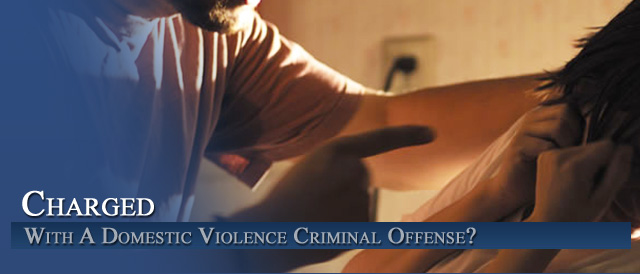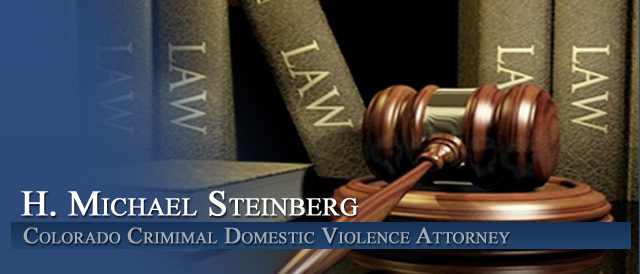




Colorado Criminal Domestic Violence Law – The Unfairness Of The Admission of Evidence of Character Other Crimes, Wrongs, or Acts – The So Called 404B – Similar Transactions Evidence
by Colorado Criminal Defense Lawyer for The Defense of Colorado Domestic Violence Cases
Introduction: There was a time when each criminal case rose or fell on the evidence of the alleged crimes charged in that case. Evidence of other crimes – also known as character or “bad acts” evidence – was excluded for reasons of fairness and due process. Today the trend is to allow for the introduction of so called bad act or character evidence using varying justifications for it’s admission.
This presumption to admit such evidence is found especially in Colorado’s laws governing domestic violence cases – such as in this law:
C.R.S. § 18-6-801.5. Domestic violence – evidence of similar transactions.
(1) The general assembly hereby finds that domestic violence is frequently cyclical in nature, involves patterns of abuse, and can consist of harm with escalating levels of seriousness. The general assembly therefore declares that evidence of similar transactions can be helpful and is necessary in some situations in prosecuting crimes involving domestic violence.
(2) In criminal prosecutions involving domestic violence in which the defendant and the victim named in the information have engaged in an intimate relationship as of the time alleged in the information, evidence of any other acts of domestic violence between the defendant and the victim named in the information, and between the defendant and other persons, constitute other acts or transactions for the purposes of this section, and the court may authorize the admission of evidence as provided in subsection (3) of this section.
(3) The proponent of evidence of other acts or transactions under this section shall advise the trial court by offer of proof of such evidence and shall specify whether the evidence is offered to show a common plan, scheme, design, identity, modus operandi, motive, or guilty knowledge or for some other purpose.
(4) Upon the offer of proof under subsection (3) of this section, the trial court shall determine whether the probative value of the evidence of similar acts or transactions is substantially outweighed by the danger of unfair prejudice to the defendant, confusion of the issues, or misleading of the jury if the evidence is allowed or by considerations of undue delay, waste of time, or needless presentation of cumulative evidence.
(5) Upon admitting evidence of other acts or transactions into evidence pursuant to this section and again in the general charge to the jury, the trial court shall direct the jury as to the limited purpose for which the evidence is admitted and for which the jury may consider it.
AND
Colorado Rule of Evidence – Rule 404 B ( The Rule )
(b) Evidence of other crimes, wrongs, or acts is not admissible to prove the character of a person in order to show that he acted in conformity therewith. It may, however, be admissible for other purposes, such as:
1. proof of motive,
2. opportunities,
3. intent,
4. preparation,
5. plan,
6. knowledge,
7. identity, or
8. absence of mistake or accident.
This is a basic exclusionary rule that generally prohibits the prosecution from offering evidence of prior transgressions of the accused to show that on the date in question, he acted in conformity with his prior behavior and therefore committed the subsequent act.
However, certain prior acts of an accused may be relevant for a purpose other than to show propensity of the accused.
Why The Prosecutor Will Argue That This Kind Of Evidence is Relevant In Domestic Violence Cases
Their Relevance Arguments Include:
(1) Evidence of similar transactions – is “helpful” and is necessary in some situations in prosecuting crime involving domestic violence because domestic violence is frequently cyclical in nature, involves patterns of abuse, and can consist of harm with escalating levels of seriousness.
(2) In criminal prosecution involving domestic violence in which the defendant and the victim named in the information have engaged in an intimate relationship as of the time alleged in the information, evidence of any other acts of domestic violence between the defendant and the victim named in the information, and between the defendant and other person, constitute other acts or transactions for the purposes of this section, and the court may authorize the admission of evidence as provided in subsection (3) of this section.
Admission Requirements For This Evidence – The Procedure
(3) The proponent of evidence of other acts or transactions under this section shall advise the trial court by offer of proof of such evidence and shall specify whether the evidence is offered to show a common plan, scheme, design, identity, modus operandi, motive, or guilty knowledge or for some other purpose.
(4) Upon the offer of proof under subsection (3) of this section, the trial court shall determine whether the probative value of the evidence of similar acts or transactions is substantially outweighed by the danger of unfair prejudice to the defendant, confusion of the issues, or misleading of the jury if the evidence is allowed or by considerations of undue delay, waste of time, or needless presentation of cumulative evidence.
(5) Upon admitting evidence of other acts or transactions into evidence pursuant to this section and again in the general charge to the jury, the trial courts shall direct the jury as to the limited purpose for which the evidence is admitted and for which the jury may consider it.
Colorado employs a four part analysis to determine the admissibility of other crimes evidence:
(1) whether the proffered evidence relates to a material fact;
(2) whether the evidence is logically relevant ;
(3) whether the logical relevance of the evidence is independent of an intermediate inference that the defendant has a bad character which would be employed to suggest a probability that the defendant committed the present crime; and
(4) whether the probative value of the evidence is substantially outweighed by the danger of unfair prejudice.
Preponderance of the evidence standard:
In addition to the Spoto analysis, prior to admission of other crimes evidence, the court must be satisfied by a preponderance of the evidence that the defendant committed the other crime(s).
In People v. Groves, a division of this court rejected the contention that the preponderance of evidence determination could be made only after an evidentiary hearing. The division concluded that the “trial court possesses the discretion to make this determination in any reasonable manner,” including by giving each party the opportunity to present all the evidence in the case using offers of proof.
For Example In Colorado Domestic Violence Cases
In People v. Ramirez, the defendant was charged with burglary after he entered her home and assaulted/ menaced her. The prosecution was allowed to admit evidence that defendant had assaulted his wife three months previously when he intercepted a telephone call from another man intended for her. One of the requisite mental states for the offense of burglary charged here is the specific intent to commit an underlying crime.
The prosecution had to prove that the defendant had the specific intent to assault or menace the victim, and that he actually assaulted or menaced her. Because the other act evidence showed that the defendant had previously intended to harm his wife by punching her in the face, it made it more likely that his intent during the charged offenses was again to harm her, and less likely that his intent was merely to frighten her.
The Court admitted the evidence on the basis that the “challenged evidence was thus relevant to prove elements of the burglary charge.”
In People v. McGraw, defendant was charged with arson in connection with the burning of two vehicles within a ten-day period. The first vehicle belonged to his ex-girlfriend, the second to the ex-girlfriend’s new boyfriend. The trial court allowed the prosecution to admit evidence of statements by defendant to his new girlfriend when she visited him during his pretrial incarceration. Defendant allegedly asked his new girlfriend to pass on a threat to his ex- girlfriend.
The Court found that the trial court properly applied the four-part Spoto test and found that this act related to the material fact of defendant’s motive to commit the crimes, was logically relevant to defendant’s motive, was relevant independent of an inference that defendant had a bad character and acted in conformity with that character, and had probative value that was not substantially outweighed by the danger of unfair prejudice.
In People v. Fry, the defendant was convicted in the murder of his girlfriend. The trial court allowed the prosecution to offer the testimony of three of defendant’s former girlfriends regarding domestic violence perpetrated against them by defendant.
The Court found no abuse of discretion reasoning that throughout the trial, defendant maintained that he did not hit the victim and that she sustained her injuries from a fall. Thus, evidence of other acts of domestic violence tended to show defendant’s intent, malice, and the absence of mistake or accident, and therefore it relates to a material fact.
In People v. Torres, the defendant was convicted of second degree kidnapping, third degree assault, and criminal mischief, all acts of domestic violence. The trial court allowed the victim to testify that in 2003 police were called to her home after Torres “grabbed her.” Here, the evidence had a tendency to show that it was more probable that Torres intended to commit the acts of domestic violence.
The Court found no abuse of discretion and agreed with the trial court’s conclusion that the logical relevance of the prior act was independent of the prohibited inference that defendant had a bad character. The prior act was evidence that defendant’s motive for entering the home was to assault the victim, that he acted knowingly in assaulting her, and that his movement of her to the basement was likely done with the intent to continue to threaten or harm her.
The Court further held the trial court did not abuse its discretion in concluding that the probative value of the prior act evidence was not substantially outweighed by the danger of unfair prejudice because the nature of the prior act was not likely to inflame the jury and it had significant probative value.
In People v. Ma, the Court concluded that although C.R.S. 18-6-801.5 declares that in determining the admissibility of other acts as evidence in domestic violence cases, the trial court is to accept offers of proof, the requirement under Garner supra, for proof by a preponderance of evidence has not been
In People v. McBride, the defendant was convicted of shooting his girlfriend in the face with a shotgun. The victim testified that during their two year relationship, defendant committed several violent acts, including punching, beating, and choking her. She also recounted incidents when defendant had threatened her with a knife and shotgun. The defendant argued that the trial court abused its discretion in finding that the third prong of the Spoto analysis had been met.
The Court disagreed and found that the prior acts showed a specific tendency of defendant to act violently against the victim when he became frustrated and was therefore tied with sufficient specificity to the charged offenses that it properly could be considered independently of the prohibited inference that defendant had a bad as they bore directly on whether the shooting was intentional (as the prosecution contended) or accidental (as defendant maintained).
Other Articles of Interest:
- Colorado Criminal Law – Expert Testimony In Colorado Domestic Violence Cases – Unfair and Unjust
- Understanding When Other Past Crimes or Bad Prior Acts Are Admitted at Trial in Colorado
- Colorado Criminal Trial Law – Introducing Evidence Of A Defendant’s Good Character Under CRE 404 (a) – In Colorado Domestic Violence Cases
- Federal DV Laws – The U – VISA
- FAQ: Understanding Colorado’s Probation Supervision System












